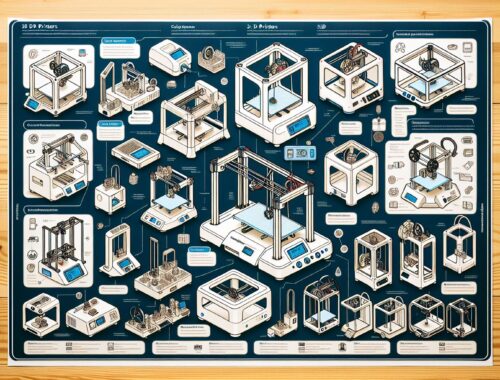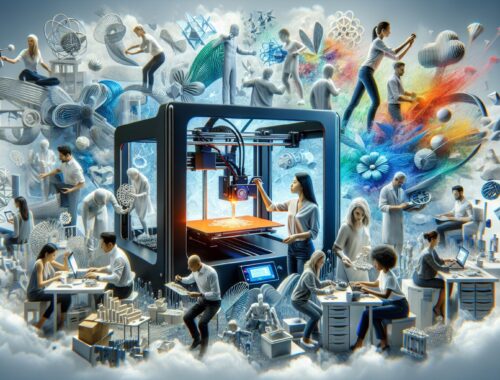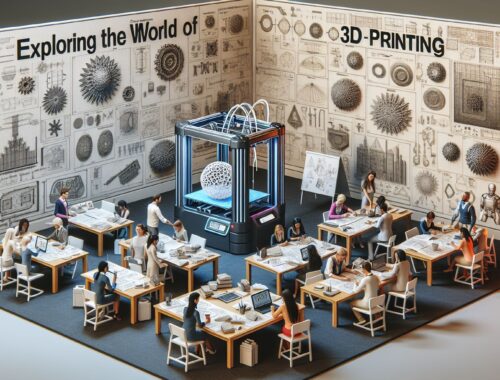
3D Modeling and Printing: Expanding Possibilities for College Students
In today’s ever-evolving technological landscape, 3D modeling and printing have emerged as remarkable tools that transcend traditional boundaries in the world of education. With their ability to bring concepts to life, these technologies have revolutionized various fields, including toy creation, model building, manufacturing, and product design. College students now have the incredible opportunity to delve into these realms, embracing innovation and creativity to enhance their educational journey. In this article, we will explore the vast possibilities that 3D modeling and printing offer to college students, empowering them to turn their ideas into reality.
The Power of 3D Modeling
Before we delve into the incredible potential of 3D printing, let’s first elucidate the importance of 3D modeling. 3D modeling allows students to visualize and conceptualize their ideas with great precision. With the aid of powerful software applications, students can intricately design and manipulate digital objects, varying in complexity from simple geometric shapes to intricate architectural designs.
Through 3D modeling, students gain crucial skills in spatial visualization, critical thinking, and problem-solving. The ability to bring their ideas to life in a digital realm allows students to explore various design possibilities and iterate their designs before transitioning to the physical stage. This process fosters innovation, creativity, and attention to detail – skills that are invaluable in academic pursuits and future professional endeavors.
Unleashing the Potential with 3D Printing
After conceptualizing their ideas through 3D modeling, college students can harness the power of 3D printing to manufacture physical representations of their creations. With 3D printers becoming increasingly accessible, affordable, and user-friendly, the once-exclusive realm of manufacturing has opened its doors to aspiring creators.
One of the most exciting applications of 3D printing for college students lies in the realm of toy creation. Through 3D modeling, students can design unique toys that cater to specific needs or preferences. These personalized creations can foster imaginative play, but they also serve as educational tools. By incorporating educational content into the design of their toys, such as historical information or scientific concepts, students can make learning engaging and interactive.
Moreover, 3D printing enables students to build highly accurate physical models for various disciplines, including architecture, engineering, biology, and more. Gone are the days when students had to rely solely on handcrafted models, which often lacked precision and detail. With 3D printers, students can now create intricate and realistic replicas of buildings, organisms, and prototypes, facilitating a better understanding of complex concepts.
Manufacturing and Entrepreneurship Opportunities
Beyond the realm of toys and models, 3D printing holds immense potential for college students pursuing entrepreneurial ventures. With their ability to manufacture custom products on-demand, 3D printers empower students to turn their innovative ideas into tangible, marketable products.
For instance, imagine a student designing a unique smartphone accessory that solves a common problem. With 3D modeling, they can create the perfect prototype, refine its design, and then seize the opportunity to manufacture the product using a 3D printer. This hands-on experience allows students to understand the intricacies of product development, market research, and supply chain management. Through this process, they acquire invaluable skills and knowledge that can pave the way for future entrepreneurial endeavors.
Embracing Creativity and Collaboration
In addition to the practical applications, 3D modeling and printing offer an exciting platform for fostering creativity and collaboration among college students. With the availability of online communities, forums, and platforms dedicated to sharing 3D designs, students can engage in collaborative projects, sparking inspiration and exchanging knowledge.
Through collaboration, students can push the limits of their creativity and learn from their peers. They can explore uncharted territories, combining disciplines and perspectives to create innovative solutions. This collaborative nature of 3D modeling and printing reflects the realities of our interconnected world, where diverse perspectives and teamwork are paramount.
Conclusion
In conclusion, 3D modeling and printing present college students with extraordinary opportunities for growth, innovation, and exploration. By utilizing these technologies, students can enhance their educational journey, foster critical skills, and delve into realms that were once out of reach. Whether it be through toy creation, model building, manufacturing, or product design, the possibilities are endless.
As college students embrace 3D modeling and printing, they not only open doors to new educational experiences but also equip themselves with skills that are increasingly in demand in today’s workforce. The ability to turn ideas into tangible, marketable products empowers students to become agents of change and entrepreneurship.
So, let us encourage college students to embrace these technologies, unlock their imagination, and shape a future where innovation and creativity thrive. With 3D modeling and printing, the power to create and transform is at their fingertips.
You May Also Like

An Introduction to Various Types of 3D Printers: A Guide for College Students
February 8, 2024
The World of 3D Modeling and Printing: A Gateway to Creativity and Skills Development
January 7, 2024
